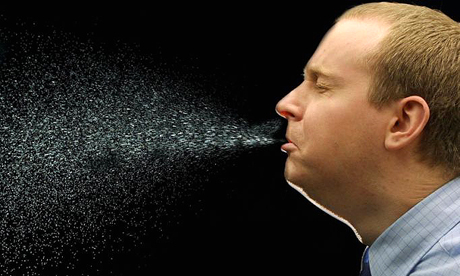I am so proud of myself for sitting through the 12-hour long course without falling asleep. I actually managed to learn a lot of stuff about food hygiene which I want to share with you too!
As promised, Open Cafeteria will document everything that I have learnt through the course of my own journey in setting up my very own cafeteria. This article is going to be about 5 good practices for food handling you can adopt in your kitchen or with your kitchen staff when you open your own cafeteria/ restaurant in future.
Food Hygiene Tip No. 1: Placement of Foods in Your Chillers
Above is a typical under-counter chiller you will probably use in your restaurant's kitchen. If you have to put cooked food and raw food into the same chiller, you must follow this rule. Raw foods, especially meat, can have juices dripping onto other foods. These juices, more often than not, contain harmful bacteria which may cause cross-contamination (from one food to another). In the chiller, these juices might end up in the cooked food which are ready to be served if placed on the top tiers.
Even if you are using containers to store your raw meats, you can never be too careful in terms of food hygiene, and I would adopt this practice and make it a good habit for my kitchen staff. Do not take these practices for granted because lives have been lost due to severe cases of food poisoning. It is our responsibility as cafe owners to ensure that our customers eat good and clean food.
Food Hygiene Tip No. 2: FIFO (First-In, First Out)
You might not have the same kind of storage system in your kitchen, but you get the idea. The FIFO principle is that food with an earlier expiry date should be placed in front of those with later ones in the storage areas. Enforce this and you will experience less wastage and of course, ensure that your customers do not consume expired products and get plagued by food borne illnesses.
Check this link for a solution by EcoLab to make the expiry dates of your food products more visible to your staff using color coded labels!
Food Hygiene Tip No. 3: The Proper Way of Sneezing in the Kitchen
There's hardly any way to stop yourself from having the sneeze of your life when it decides to come. So, how would you sneeze in the kitchen? Would you:
1) Sneeze onto your apron?
2) Sneeze onto a piece of tissue?
3) Sneeze on the floor?
Let me explain why doing any of the above 3 options are all wrong. Firstly, your apron is meant to protect the food from your body's contamination. Sneezing onto your apron defeats the purpose of its very existence. Secondly, tissues should not be allowed in kitchens due to its flimsy nature which might cause contamination to the food prepared. Sneezing on the floor... It can go two ways: you clean it up immediately, distracting you from your work, or you leave it there for it to be a breeding ground of bacteria.
The good news is that you do not have to go out of the kitchen to sneeze! Simply turn away from the food that you are preparing, and cover your mouth with your hands when you sneeze. You must wash your hands thoroughly with sanitizer before going back to handle your food though.
Food Hygiene Tip No. 4: Veggie Samurais and Fruit Ninjas
Just look at how pretty these color-coded chopping boards are. Using these can help reduce the risk of cross-contamination during the course of food preparation:
Red: Raw Meat
Blue: Raw Fish/ Seafood
Yellow: Cooked Meats
Green: Salads and Fruits
Brown: Vegetables
Grey: Baked/ Dairy Products
The same rules apply for knives so start color coding your knives now!
Food Hygiene Tip No. 5: Chipped/ Cracked Utensils
As cafe owners, we all want to keep our costs as low as possible. But there's a good reason why you should replace chipped or cracked utensils as soon as you spot them. Not only can they cause physical injuries to your customers if they eat out of a chipped bowl, these utensils can potentially harbor bacteria.
That's all I have for now. Do hit me up at opencafeteria@gmail.com should you have any queries at all. Cheers and have a great week ahead!




No comments:
Post a Comment